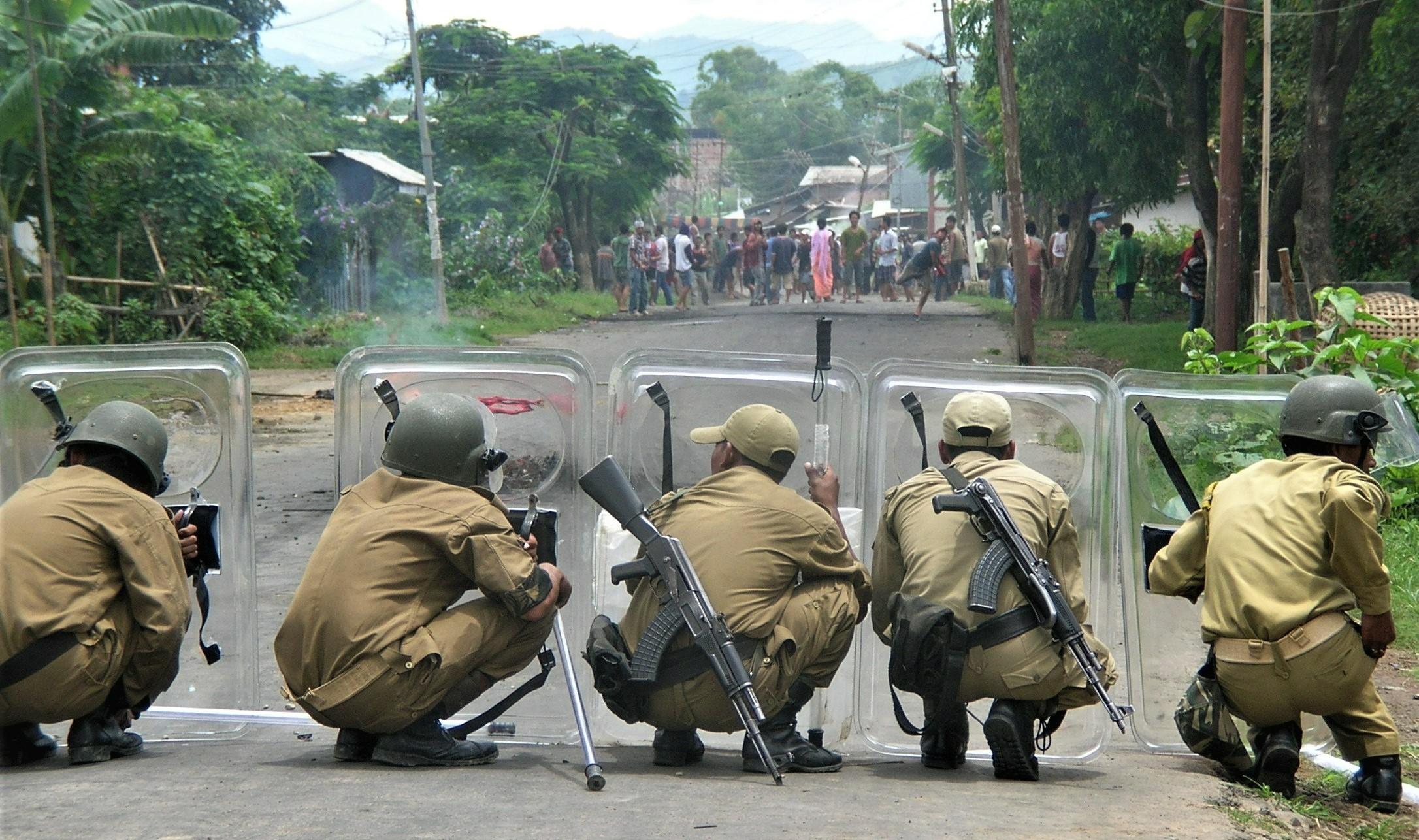Restive districts in India that border Myanmar will remain under a controversial law that gives extraordinary powers to India’s security forces, despite the fact that the law has been revoked in other frontier areas.
The Indian government is apprehensive of a renewed campaign by separatist rebel groups who have bases and training facilities in Myanmar’s Sagaing Region, which borders restive districts in India’s Arunachal Pradesh, Nagaland and Manipur states.
The Armed Forces (Special Powers) Act 1958 (AFSPA) gives an edge to the security forces combating the militants. Some of the act’s powers include opening fire upon anyone who is acting against law and order, arresting people without a warrant, searching any vehicle and prohibiting gatherings of five or more people.
AFSPA, which dates back to the time of British colonial rule, can be imposed in “disturbed areas” for a period of six months, after which a decision on its extension is reviewed by the government. Protests against AFSPA have broken out at regular intervals in frontier regions, with locals calling for the repeal of the act, following allegations of the security forces committing atrocities and faking confrontations with alleged rebels.
A senior government official said that India’s security agencies have received a number of reports in the last eight months about separatist Indian rebels based in Myanmar regrouping and recruiting.

“Among all the groups, the independent faction of the United Liberation Front of Asom (ULFA) has recruited the maximum number of cadres who are now being trained at camps in the Naga-inhabited zone of Myanmar’s Sagaing Region,” said the official.
ULFA, which has been active in India’s Assam State since the early 1980s, declared a unilateral ceasefire with New Delhi in May last year, citing the COVID-19 pandemic as the reason for the group’s decision.
There have also been reports of efforts by separatist groups to establish a new general headquarters in Sagaing Region. Separatist outfits from India’s Manipur State, such as the People’s Liberation Army (PLA) and the People’s Republican Party of Kangleipak, who relocated in 2019 to other bases, have also reportedly returned to Naga territory in Myanmar.
All these developments indicate that the separatist campaign could recommence, so adversely affecting India’s frontier districts. Indian security forces are already exercising extra caution after a colonel and four soldiers of the Assam Rifles were killed last November in a PLA ambush in Manipur’s Churachandpur District.
India’s government is also concerned at the ‘understanding’ reportedly arrived at between these groups and the Myanmar military. Some government officials believe that the separatist bases in Sagaing Region are unlikely to be “disturbed” as the rebel groups have agreed to engage in attacks against anti-regime People’s Defence Forces (PDF) in the region.
Last February, in an interview with The Irrawaddy, Chin National Front (CNF) spokesperson Salai Htet Ni stated that the junta has mobilised Indian militant outfits to crush the resistance movement in western Myanmar’s Chin State, which also borders India. He also referred to a clash between the CNF and the Zomi Revolutionary Army, which has camps in Manipur State and which has a ceasefire agreement with India’s government.
Local PDFs have been very active against the military regime in Chin State and Sagaing Region. The junta has retaliated with brutal crackdowns, including attacks by helicopter gunships in Sagaing.
The regime’s decision to ally with Indian militant groups can be understood in the context of the escalating resistance movement across Myanmar. According to some observers, the effective strength of the Myanmar military’s combat soldiers is around 100,000-120,000, which has necessitated marshalling extra resources to combat the anti-regime forces.
The junta’s ‘understanding’ with the Indian separatist outfits is almost a reversal of the policy that was unleashed early in 2019, when Operation Sunrise I & II were executed to dismantle the camps of rebel groups in the Naga region of Sagaing. The operation, carried out in two phases, targeted bases at Taga in the Hukawng Valley near the Chindwin River, and the second battalion and general headquarters of the Khaplang faction of the National Socialist Council of Nagaland (NSCN-K).
That raid was the outcome of an agreement between the Myanmar military and the Indian government. The operation caught the groups by surprise since a ceasefire agreement had been inked in 2012 between the Myanmar military and the NSCN(K), after years of an unwritten pact which had brought hostilities between the two sides to an end.
The cessation of hostilities was preceded by occasional raids by the Myanmar military on the camps and columns of the rebels, which date back to the late 1960s when the Naga National Council established a footprint in Myanmar. Those attacks became more frequent in the 1980s, which forced the groups to often shift their bases to different locations. New Delhi’s repeated pleas to the Myanmar military to eliminate the camps had hardly elicited any positive response, barring a few occasions such as the attack in 2019.
Rajeev Bhattacharyya is a senior journalist in Assam, India

















